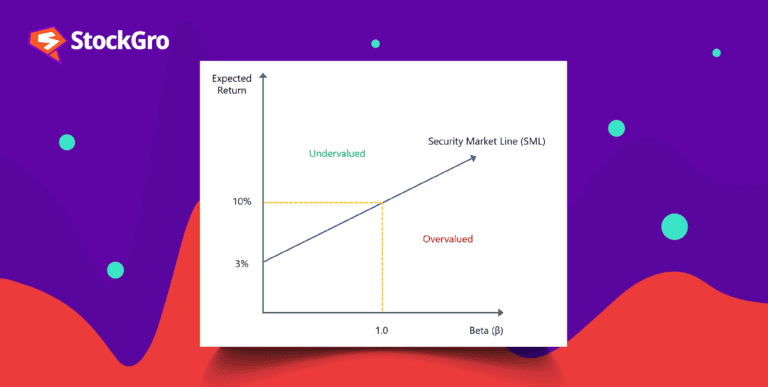Table of contents
Treasury Bills Repurchase (TRePs) is a simple short-term instrument in the money market where people can earn from their spare cash.
Mutual funds, known for pooling money to invest, often put money in TRePs to increase earnings for the people who have invested with them. Today we will look at why mutual funds choose TRePs and how this choice impacts the price of their shares.
What is TRePS?
Treasury Bills Repurchase (TRePS) is a short-term investment instrument used by mutual funds, banks, and financial institutions. In a TRePS deal, a party sells treasury bills to another, promising to repurchase them later at a preset price.
Being backed by government securities, it’s attractive for short-term investors due to good returns and swift liquidity.
Why do mutual funds invest in TRePS?
Mutual funds opt to invest in TRePS (Tri-party Repo) for various reasons, chief among them being safety, liquidity, attractive returns, and abiding by regulatory rules.
TRePS involve buying government-issued securities, making them a secure investment choice. Besides, TRePS provide quick liquidity, serving as a perfect spot for mutual funds to place their unused cash for short terms.
TRePS often present good returns, swayed by ongoing market scenarios. When interest rates climb, TRePS potentially deliver higher returns, enabling mutual funds to profit more on their idle cash.
Furthermore, the Securities and Exchange Board of India (SEBI) directs mutual funds to allocate a minimum of 5% of their assets in liquid assets like TRePS. This rule makes it essential for mutual funds to channel investments into TRePS.
The effect of TRePS investment on a mutual fund’s share price hinges on multiple aspects, such as the investment size and duration, market conditions at the time, and the fund’s overall asset distribution.
Investing in TRePS can positively influence a mutual fund’s share price. Firstly, higher returns from TRePS can push up the fund’s net asset value (NAV), possibly boosting its share price as investors might pay extra for a heightened NAV.
Secondly, TRePS, being a safer and more liquid tool, helps lessen the portfolio’s risk tied to other assets like equities or corporate bonds, aiding in portfolio stabilisation and dampening market upheaval effects on the fund’s share price.
On the flip side, a substantial investment in TRePS could cap the overall portfolio’s return capability, possibly leading to a share price dip if investors find the return prospect lower.
Benefits of Investing in TRePS
| Benefits | Explanation |
| Safety | TRePS involve the purchase of government-issued securities, making them a secure investment choice. |
| Liquidity | Quick and easy conversion to cash, allowing for better management of idle resources. |
| Attractive Returns | Depending on market conditions, particularly higher interest rates, TRePS can offer good returns. |
| Regulatory Compliance | Recognised by SEBI as liquid assets, aiding in adherence to regulatory guidelines. |
| Diversification | Provides a safe and liquid option to diversify a portfolio, reducing overall risk. |
Impact of TRePS on the share market
Investing in TRePS by a mutual fund can result in a surge in its net asset value (NAV), thereby lifting the share price. This is due to the investor’s preference for mutual funds with a higher NAV as it hints at superior returns.
They protect against risks found in other portfolio areas, and their stability can aid in mitigating market shake-ups, resulting in a favourable share price.
On the downside, if a mutual fund channels too much money into TRePS for an extended stretch, the earning potential might not be maximised. This scenario could pull the mutual fund’s performance down if investors suspect they can fetch better returns elsewhere.
The sum of money and the duration it’s kept in TRePS ought to be wisely strategised to ensure they resonate with the mutual fund’s ambitions and the prevailing market scenario.
Conclusion
A convenient and secure move for mutual funds is investing in TRePS for a fair return, easy access, and compliance with regulations.
Meanwhile, a Tri-party Repo (TReP) is a type of repurchase contract which streamlines the process further by employing a “Tri-Party agent” as a mediator to handle transactions and improve collateral management.
This innovation not only elevates the bond market’s liquidity but also optimises the use of underlying collateral, strengthening the hold of the term repo market in India.
FAQs
Yes, a successful TRePS investment may result in larger returns, which might raise the mutual fund’s share price. This is a result of investors being drawn to funds with greater net asset values (NAVs). But TRePS also gives a portfolio more stability, which helps shield it from market volatility.
The full form of TRePS is Treasury Bills Repurchase. Short-term money market instruments, also known as Treasury Bills Repurchase, or TRePS, let investors profit from trading in government assets, particularly T-Bills.
CBLO (Collateralised Borrowing and Lending Obligation) was an electronic trading platform with a screen that allowed users to lend and borrow funds anonymously in a collateralised setting. TRePS, on the other hand, permits the borrowing and lending of money secured by government assets in a Tri Party Repo arrangement.
Investors may profit from their idle cash by investing in Treasury bills Repurchase (TRePS), a short-term money market instrument. One common investment vehicle, mutual funds, has been making TRePS investments that generate returns for their owners.
An arrangement for the short-term sale of securities with the intention of buying them again at a slightly higher price is known as a reverse repurchase agreement. Banks employ reverse repos and repurchase agreements for short-term borrowing and lending to fulfil their reserve requirements.

